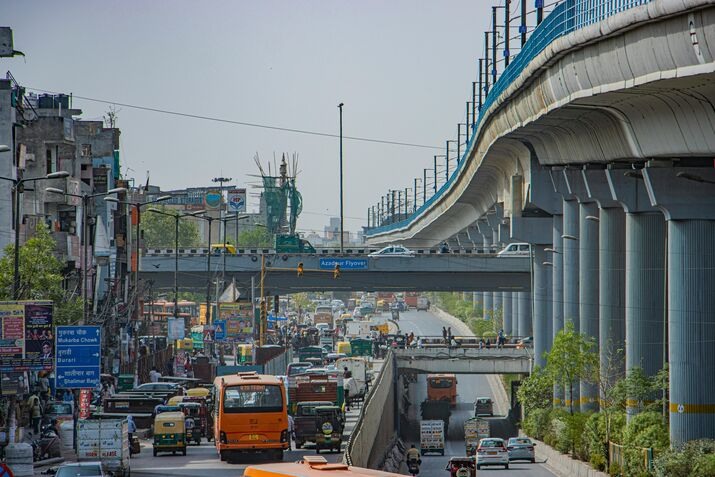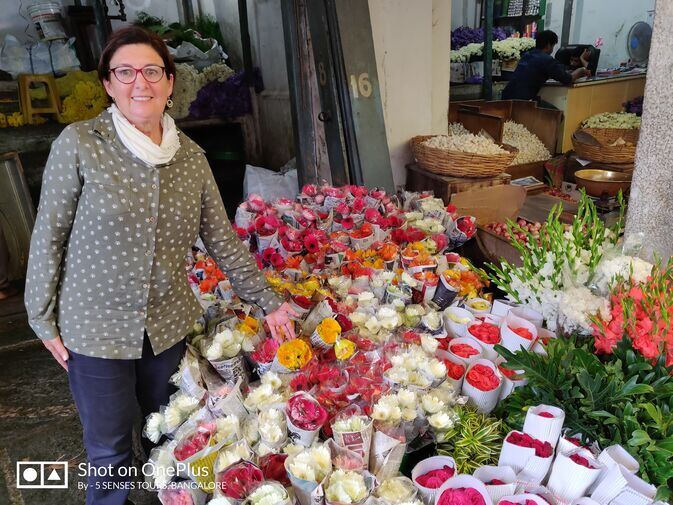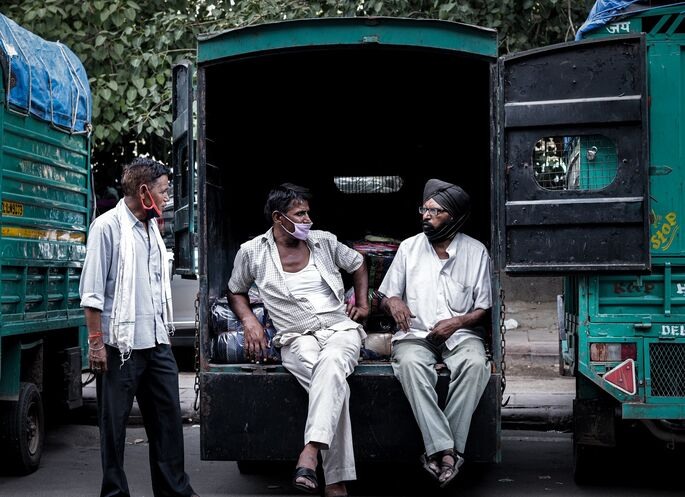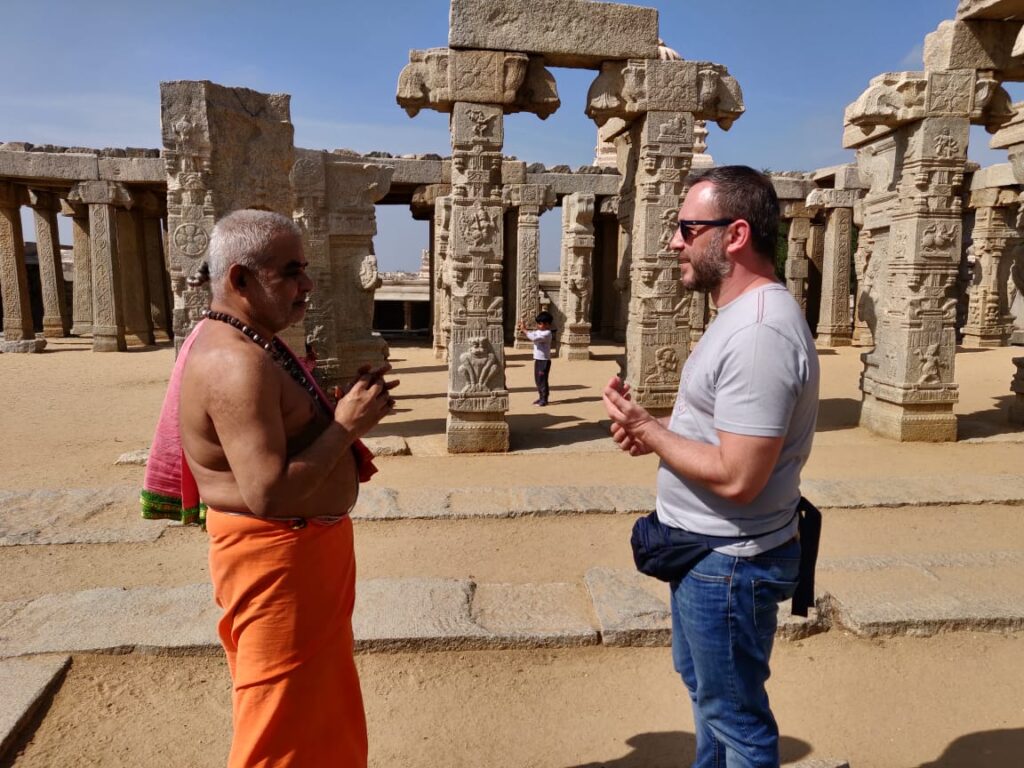Ever stood in the middle of a crowded Delhi street, completely frozen because you just saw a cow casually strolling through traffic? That was me, three years ago. Think you understand cultural shocks? India laughs at your preparation. The country doesn’t just push you out of your comfort zone—it catapults you into a parallel universe of sensory overload and cultural contradictions.
I’ve spent years documenting travel experiences in India, and the cultural differences you’ll encounter go far beyond what guidebooks warn you about. From head-bobbling communication to bathroom etiquette that will leave you puzzled, these cultural shocks in India will transform your worldview.
But here’s what nobody tells you about these moments of culture clash…
The Sensory Overload: Navigating India’s Vibrant Streets
A. Decoding the Organized Chaos of Traffic

You think your city has traffic? Wait until you’re standing at a Delhi intersection. Indian traffic isn’t just busy—it’s an entirely different universe with its own unwritten rules.
Cars, auto-rickshaws, motorbikes, bicycles, cows, and pedestrians all share the road in what looks like complete madness to the untrained eye. But there’s a method to this madness.
Horns aren’t used in anger here—they’re communication tools. A quick beep means “I’m here,” a longer one says “I’m overtaking you,” and constant honking translates to “make way!”
The concept of lanes? More like loose suggestions. Vehicles squeeze through impossibly tight spaces with millimeters to spare. You’ll wonder how accidents aren’t happening every second (though they certainly do occur).
B. Understanding the Symphony of Sounds
India doesn’t do quiet. From dawn prayers to late-night celebrations, sound is constant and unapologetic.
Morning brings temple bells and mosque calls to prayer, street vendors announcing their wares, and the ever-present honking. By afternoon, add in Bollywood music blasting from shops, children playing, and animated conversations happening everywhere.
This isn’t background noise—it’s India’s heartbeat. What foreigners call “noise pollution” locals simply call “life.” After a few days, you’ll find yourself strangely unsettled when things go quiet.
C. Adapting to the Intense Aromas and Flavors

Your nose will work overtime in India. The scents hit you in waves—incense from temples, spices from street food stalls, jasmine flowers in markets, and yes, occasionally sewage and garbage too.
Indian food doesn’t just taste different—it explodes with flavor. What we call “spicy” back home barely registers on the Indian scale. Even “mild” dishes pack more punch than most Westerners expect.
Street food tempts you at every corner, but your stomach might need time to adjust. Many travelers experience the infamous “Delhi belly” before their digestive systems catch up with their adventurous appetites.
D. Managing the Constant Visual Stimulation
India is a feast for the eyes—sometimes overwhelming so. Colors are brighter, decorations more elaborate, and crowds denser than you’ve likely experienced.
Women in vibrant saris navigate streets lined with shops displaying goods in every color imaginable. Religious symbols, street art, and advertising compete for your attention on every surface.
Nothing is understated here. Temples aren’t just places of worship—they’re architectural masterpieces covered in intricate carvings and paintings. Even humble homes might be painted in bold blues, pinks, and yellows.
Your brain will struggle to process it all at first. You’ll find yourself staring, mouth slightly open, as your senses try to catch up with what your eyes are seeing. This visual overload is exhausting but exhilarating—much like India itself.
Personal Space and Social Interactions
A. Why Indians Stand So Close During Conversations

Ever noticed how close Indians get during a chat? That gap you’re used to keeping between you and a stranger? It doesn’t exist here.
In India, personal space shrinks dramatically. While Westerners typically maintain about an arm’s length distance, Indians might stand just inches away from you. This isn’t rudeness – it’s cultural intimacy.
Indians grow up in crowded homes, packed public transport, and bustling markets. Personal space simply isn’t a concept that developed the same way.
When an Indian shopkeeper practically breathes down your neck while you browse, or a stranger on the train presses against you despite empty seats nearby, they’re not being inappropriate. It’s normal here.
The first few days in India, you’ll feel constantly invaded. Your instinct to step back might even offend locals who interpret it as coldness or discomfort with them personally.
My advice? Take a deep breath and adapt. You’ll be surprised how quickly you adjust to this closer proximity.
B. The Head Wobble: Deciphering India’s Unique Gesture
That side-to-side head movement you’ll see everywhere in India? It’s not a no. It’s not exactly a yes either. It’s the famous Indian head wobble, and it’s driving you crazy because you can’t figure it out.
The head wobble (or head shake) is India’s most distinctive non-verbal communication. It’s somewhere between a nod and a shake, with the head tilting from side to side.
What makes it confusing is that it can mean:
- Yes
- I understand
- I agree
- Maybe
- I’m listening
- Hello
- Thank you
Context is everything. A slight wobble with raised eyebrows might mean skepticism. A vigorous wobble with a smile suggests enthusiasm.
Foreigners often misinterpret this as indecision or confusion. It’s neither. It’s actually one of India’s most efficient communication tools.
You’ll catch yourself doing it within weeks. And once you start, it’s nearly impossible to stop – even after you return home.
C. Physical Contact Norms Between Genders
The rules about touching in India will throw you for a loop. They’re complicated, unspoken, and completely different from what you’re used to.
In public, you’ll rarely see men and women showing physical affection. Even married couples typically don’t hold hands or kiss in public. PDA is a big no-no.
Meanwhile, same-gender physical contact is completely normal and doesn’t carry any sexual connotation. Men hold hands or walk with arms around each other’s shoulders. Women link arms and hold hands freely.
Some key things to remember:
- Never touch someone of the opposite gender unless they initiate it
- A handshake might be acceptable in business settings
- The traditional greeting of “namaste” with palms pressed together is always appropriate
- In rural areas, some women may avoid direct eye contact with men they don’t know
Women travelers should be particularly cautious about physical boundaries with men. What might seem like friendly behavior in your culture could be misinterpreted here.
D. Family-First Mentality and Its Impact on Daily Life
In India, family isn’t just important – it’s everything. This isn’t the Western idea of nuclear families who meet for holidays. This is all-encompassing, life-directing family commitment.
Major decisions aren’t individual choices. Careers, marriages, finances – these are family affairs. Adults commonly live with parents until marriage (and often after). Three generations under one roof is normal, not exceptional.
This family-first approach shapes everything:
Work life? Expect colleagues to take leave for extended family functions.
Dating? Many marriages are still arranged or at least family-approved.
Housing? Apartments advertise themselves as “family-friendly,” meaning no singles.
Privacy? Virtually non-existent. Everyone knows everyone’s business.
For visitors, this tight-knit system can feel suffocating or beautifully supportive, depending on your perspective. You’ll get asked about your family constantly. The concept of traveling alone by choice might be met with genuine concern.
The upside? Once you’re welcomed into an Indian home, you’re treated like family – with all the warmth, care and food that entails.
E. The Direct Questions That Might Catch You Off Guard
Brace yourself for personal questions. Really personal. Questions that would make people gasp back home fly freely in everyday Indian conversation.
Complete strangers might ask you:
- “How much money do you make?”
- “Why aren’t you married yet?”
- “Do you have children? Why not?”
- “How much did that cost?”
- “Have you gained weight?”
Indians don’t consider these questions rude. They’re expressions of interest and connection. In a culture where community matters more than privacy, direct questions show engagement rather than intrusion.
The salary question comes from genuine curiosity about living standards. The marriage questions reflect a society where family formation is considered essential to wellbeing.
You have options when these questions come up. You can answer honestly, deflect with humor, or politely say it’s not something you discuss. Just don’t take offense – there’s none intended.
After a while, you might find this directness refreshing. There’s something authentic about skipping small talk and diving into real life.
Time and Punctuality: The Indian Flexibility

Embracing “Indian Stretchable Time”
Forget everything you know about punctuality when visiting India. Here, time isn’t a rigid concept—it’s more like a gentle suggestion. The phenomenon even has a nickname: IST, which locals jokingly call “Indian Stretchable Time” rather than “Indian Standard Time.”
If someone says they’ll meet you at 2:00 PM, don’t be surprised if they stroll in at 2:45 PM with no apology. It’s not rudeness—it’s just how things work. The beauty of this flexibility is that it teaches you to slow down and enjoy the moment rather than constantly watching the clock.
The Relaxed Approach to Schedules and Deadlines
In India, schedules bend to accommodate life, not the other way around. A business meeting might start late because someone stopped to help a neighbor or chat with a friend along the way. Family functions rarely begin at the stated time—a wedding invitation for 7:00 PM typically means guests will arrive around 8:30 PM, and the main events might start even later.
This relaxed attitude extends to work too. While multinational companies maintain Western timelines, many local businesses operate with more fluid deadlines. The concept is built on a cultural understanding that life is unpredictable, and rigid schedules don’t always make sense.
When “Tomorrow” Doesn’t Always Mean the Next Day
One of the most charming (and sometimes frustrating) aspects of Indian time concepts is the elastic meaning of “tomorrow.” When someone tells you something will happen “kal” (tomorrow), it might actually mean:
- Literally tomorrow
- Sometime in the near future
- When it’s convenient
- When the stars align
This isn’t about unreliability—it’s about prioritizing harmony over strict timing. Indians generally believe that stressing about exact minutes and hours creates unnecessary tension. Instead, there’s a beautiful acceptance that things will happen when they happen.
Food Culture Beyond Curry
The Surprising Diversity of Regional Cuisines
Think curry is all there is to Indian food? You couldn’t be more wrong. India’s culinary landscape is like 28 different countries stuffed into one. From the coconut-infused dishes of Kerala to the fiery vindaloos of Goa, every state has its own distinct flavor profile.
North Indian food (what most foreigners know as “Indian food”) is just the tip of the iceberg. Head east and you’ll find Bengali cuisine with its subtle fish preparations and sweet touches. Go south and rice replaces bread as the staple, with coconut, tamarind, and curry leaves dominating the flavor profile.
Here’s something that’ll blow your mind: many Indians from one region haven’t even tried dishes from another region. That’s how diverse it gets.
Eating with Your Hands: A Skill Worth Mastering
Forks and knives? Put them aside. In India, your hands are the best utensils, especially for traditional meals served on banana leaves or steel thalis.
There’s actually a method to it: use your right hand only, gather food with your fingertips (not your palm), and mix rice with curry using a gentle motion. It’s not messy when done right—it’s an art form.
Most Indians believe food tastes better when eaten this way because you form a physical connection with your meal. Plus, you can feel the temperature and texture before it enters your mouth.
Tourists who attempt to eat with their hands earn instant respect points from locals. Just be prepared for some good-natured laughter as you figure it out.
Vegetarianism and Food Restrictions You’ll Encounter
Vegetarianism isn’t just a diet choice in India—it’s deeply woven into the cultural and religious fabric. About 30% of Indians are vegetarian, but even meat-eaters follow certain restrictions.
You’ll spot food packages marked with green dots (vegetarian) or brown dots (non-vegetarian). Many restaurants are completely “veg” or have separate kitchens for vegetarian cooking.
During religious festivals or in holy cities like Varanasi, finding non-vegetarian food becomes nearly impossible. And if you’re dining with Indian friends, always check if they have dietary restrictions before choosing a restaurant.
Even McDonald’s had to adapt—no beef burgers here! Instead, they serve the McAloo Tikki (potato patty) and Maharaja Mac (chicken).
Street Food Etiquette and Safety Tips
Indian street food is legendary, but there are unwritten rules to navigate this delicious terrain without spending your trip in the bathroom.
Go where the locals go. A busy stall with high turnover means fresher food. Watch for vendors who handle both food and money without washing hands—that’s a red flag.
Start with cooked items like freshly made pakoras or anything straight off the tava (griddle). Avoid pre-cut fruits or anything that’s been sitting out.
Carry your own water bottle and skip the ice in drinks. Chutneys and raw veggies are common culprits for Delhi Belly, so ease into these slowly.
Most importantly, build your tolerance gradually. Your stomach needs time to adjust to the local microbiome, so don’t dive into the spiciest, most exotic street food on day one.
For food street walk in India, please check Bangalore, Delhi, Chennai and Pune.
Spiritual and Religious Practices in Daily Life

Temple Etiquette for Foreigners
Walking into an Indian temple unprepared is like diving into the deep end without knowing how to swim. Trust me, you’ll want to know these unspoken rules.
First off, shoes are a big no-no. You’ll notice the pile of footwear outside every temple – add yours to the collection. Many temples also require you to cover your head (especially for women) and shoulders. Those shorts you packed? Save them for the beach.
Before entering the inner sanctum, you might be asked to wash your hands and feet. It’s not because you look dirty – it’s a purification ritual everyone follows.
Oh, and that camera you’re itching to use? Many temples restrict photography, especially around the main deity. When in doubt, just ask.
Don’t be surprised if someone dabs your forehead with colored powder (tikka) or offers you prasad (blessed food). Accept it with your right hand – it’s considered auspicious.
For a blog on India’s coastal gems, please visit India’s best beaches.
The Unexpected Role of Spirituality in Business Decisions
Indian businesspeople often consult astrologers before signing major deals. No joke. I’ve sat in boardrooms where launch dates were postponed because Mercury was retrograde.
Many shops and offices have small shrines tucked away in corners. Every morning, you’ll see business owners lighting incense and saying quick prayers before opening for the day. It’s their version of a good luck ritual.
Ever wonder why some businesses won’t open on certain days? Many entrepreneurs won’t start new ventures during “inauspicious” periods. Some won’t even sign contracts without checking the cosmic calendar first.
Large corporations aren’t immune either. From choosing auspicious opening dates to performing elaborate puja ceremonies for new office spaces, spirituality weaves through Indian business culture in surprising ways.
Sacred Animals and Their Special Status
You’ll quickly notice that cows have VIP status in India. They casually wander through traffic as cars swerve around them. Nobody honks at them. Nobody shoos them away. They’re living deities enjoying their divine rights.
Monkeys run the show at temples like they own the place – because in many ways, they do. As representatives of Hanuman, the monkey god, they’re treated with a mixture of reverence and wariness (they’ll absolutely steal your snacks).
Elephants are considered embodiments of Lord Ganesha. You might spot them decorated with vibrant paints and fabrics during festivals, looking majestic despite the urban surroundings.
Then there are the rats at Karni Mata Temple in Rajasthan – thousands of them, considered holy and fed by devotees. Yes, you read that right. People travel miles to worship at a temple overrun with rats.
Festivals That Transform Entire Cities
Nothing prepares you for the complete transformation of cities during major festivals. During Diwali, entire neighborhoods become a galaxy of lights. The air fills with firework smoke and the constant pop of crackers makes it sound like a war zone.
Holi turns orderly streets into color battlefields where nobody – and I mean nobody – is safe from being doused in vibrant powders and water. That white shirt you’re wearing? Big mistake.
Ganesh Chaturthi in Mumbai brings everything to a standstill. Massive processions block traffic for hours as giant Ganesha idols make their way to the sea for immersion.
Durga Puja transforms Kolkata into an open-air art gallery with hundreds of elaborate pandals (temporary temples) showcasing incredible craftsmanship. The entire city becomes an immersive theatrical experience that runs 24/7 for nearly a week.
Embracing India’s cultural tapestry requires an open mind and a willingness to step outside your comfort zone. From the symphony of sounds, colors, and aromas that greet you on bustling streets to the different concepts of personal space and time, India challenges Western assumptions in the most fascinating ways. The culinary landscape extends far beyond the curry stereotype, offering regional specialties that tell stories of local traditions and history. Meanwhile, the seamless integration of spirituality into everyday life provides a profound contrast to more secular societies.
Remember that cultural shock is not something to be avoided but embraced as part of the journey. These surprising aspects of Indian culture—sensory richness, social warmth, flexible timing, diverse cuisine, and spiritual devotion—offer valuable opportunities for personal growth and understanding. By approaching these differences with curiosity rather than judgment, travelers can transform initial discomfort into meaningful cultural connections that will enrich their worldview long after returning home.
For immersive culture walks in India, visit 5 senses walks.
Discover more from Great Holiday Ideas
Subscribe to get the latest posts sent to your email.